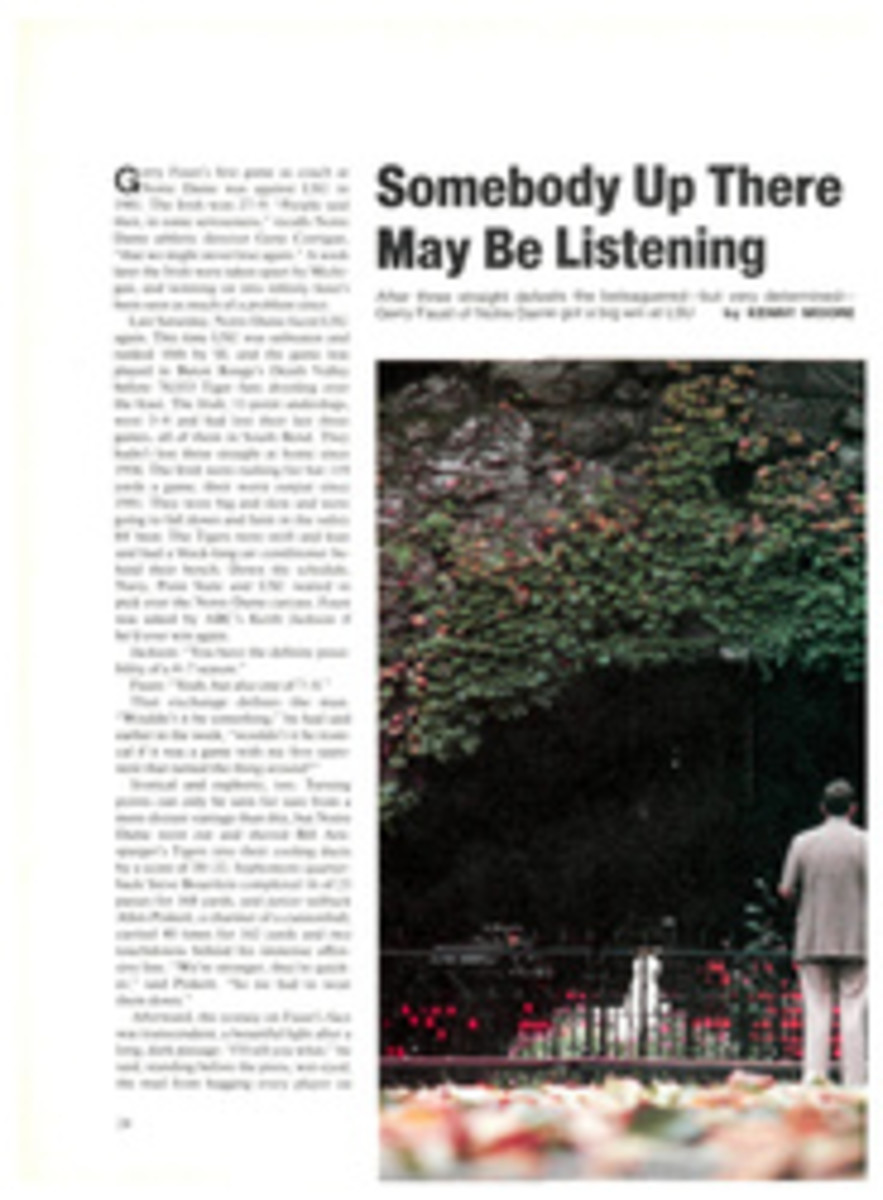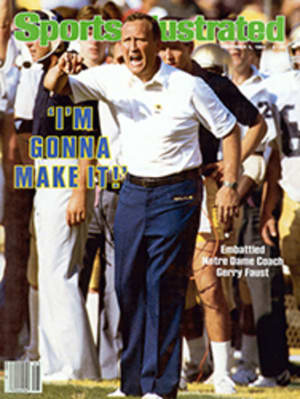
His final slip was a pink one
Ron Meyer was fired as coach of the New England Patriots last Thursday, but he had been on shaky ground for almost a month, and he had been overruled on major decisions for close to a year. He forced the issue by firing defensive coordinator Rod Rust the day before without notifying general manager Pat Sullivan, the son of team owner Billy Sullivan, who was in New Orleans for the NFL meetings. This is a no-no in Sullivan Country. You do not do things behind the backs of the Patriots' ruling family.
Actually, the Rust incident provided Sullivan with a convenient excuse for resolving a situation that had been building since the off-season, when Meyer tried to get rid of some of the more prominent Patriot veterans. Pat Sullivan overruled him, and Meyer's days were numbered.
According to Sullivan, Meyer wanted to trade tailback Tony Collins and left guard John Hannah, the greatest lineman in the club's history, plus defensive end Julius Adams, free safety Rick Sanford and running backs Robert Weathers and Mosi Tatupu, among others.
"I overruled him," Sullivan says. "He wanted to flush everyone down the toilet and rebuild from the ground up. O.K., maybe when you're a 2-14 club there's some justification for something like that, but I felt we were a darn good team with playoff-caliber material. I didn't want to see everything torn apart." Translation: When you're trying as hard as the Patriots are to sell tickets, you don't unload the top drawing cards.
Shortly before the Oct. 9 trading deadline, Meyer sought to trade long-ball wideout Stanley Morgan, who was coming back from a hamstring pull. He was overruled again, this time by Sullivan and player development director Dick Steinberg. A few days before that, Patriot receiver coach Steve Endicott had been quoted in print as saying that Morgan wasn't playing regularly because Stephen Starring and rookie Irving Fryar were better. Sullivan called Endicott, who had been on Meyer's staff at SMU, to his office and bawled him out.
"I told him he was wrong for three reasons," Sullivan said. "First of all, they're not better—he'd see that when Stanley got well. Secondly, the players get upset when they read stuff like that. Morgan's one of the leaders of this team. And thirdly, we're trying to sell tickets here.
The coaching staff was in turmoil anyway. On Oct. 5, Sullivan sat down with the players in a 45-minute meeting, "to bring problems out into the open," he says. Coaches were excluded. Fifteen minutes were devoted to difficulties the players had with Meyer.
Meyer was shaken, although he says, "I never went to Pat and threatened to resign, as some people reported. You know the Sullivans. You don't threaten them." Financially, quitting wouldn't have made any sense, either. Sullivan would have said, "Fine, you've resigned," and the remaining year and a half on his contract would have been washed. When you get fired, you get paid.
The week before he was fired, Meyer said that Sullivan's meeting with the players "was a helpful thing, but there really weren't any major problems." The players felt otherwise. "It headed off what would have been an open revolt," said center Pete Brock, and many of the older players concurred. But when do NFL players openly revolt? Answer: never. They continue to gripe, and to play, if they still want to get paid. O.K., so they didn't like the coach. Ron Erhardt, Meyer's predecessor, was a very popular guy, and he went 2-14 in 1981, his last year.
Meyer knew his days were numbered. Sullivan knew he was gone, too. The only thing lacking was an incident, a focus. Rust gave them that. One of Rust's beliefs is that you don't go to a five- or six-back defense deep in your own territory. The limited area eliminates any deep coverage worries. But on Oct. 21, when Miami went into a three-wideout offense, and inside linebacker Steve Nelson wound up covering the third wideout, Nat Moore, who scored the Dolphins' clinching TD, Meyer had a convenient vehicle for bringing matters to a head.
A defensive coordinator might bow to the head coach on personnel matters, as Rust did to Meyer on the benching of Sanford a month ago, but an old hand like Rust would never change his style of doing things. Meyer knew that. Rust was fired for "philosophical differences." It was a gamble. If Sullivan acted predictably, as he did, Meyer was through, but he would at least get paid for the rest of his contract. If Meyer had finessed it through, then maybe he would have had a shot to control the football operation, something only one coach, Chuck Fairbanks, has ever done in New England.
For that reason, the Nolls and Shulas will never work for the Patriots. Raymond Berry, a popular assistant before Meyer took charge in 1982, was hired 12 hours before Sullivan told Meyer he was fired. Berry has a contract that runs through 1987. He immediately rehired Rust, and on Sunday the Patriots rallied from a 20-3 deficit to beat the Jets 30-20.
Erhardt was popular, and he was a loser. Meyer was unpopular, but he had a 2½-year winning record (18-16) and a playoff contender this year. Now the contender—New England is 6-3—belongs to Berry. And control still belongs to the Sullivans.
PHOTO
MANNY MILLAN
Meyer (above) was axed while Rust (with glasses) returned with Berry.
PHOTO
JOHN IACONO
[See caption above.]

